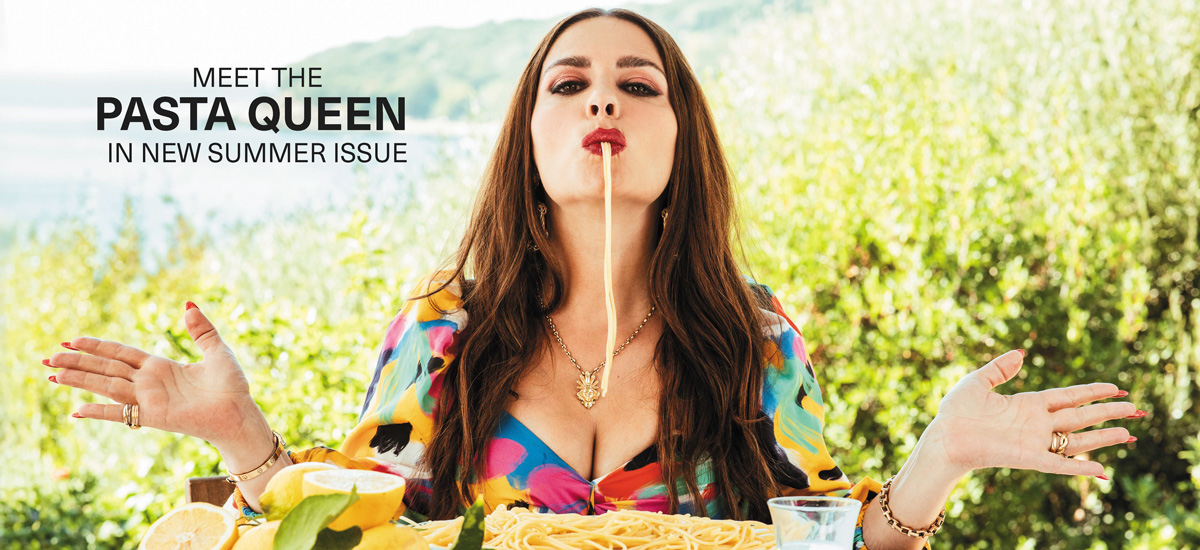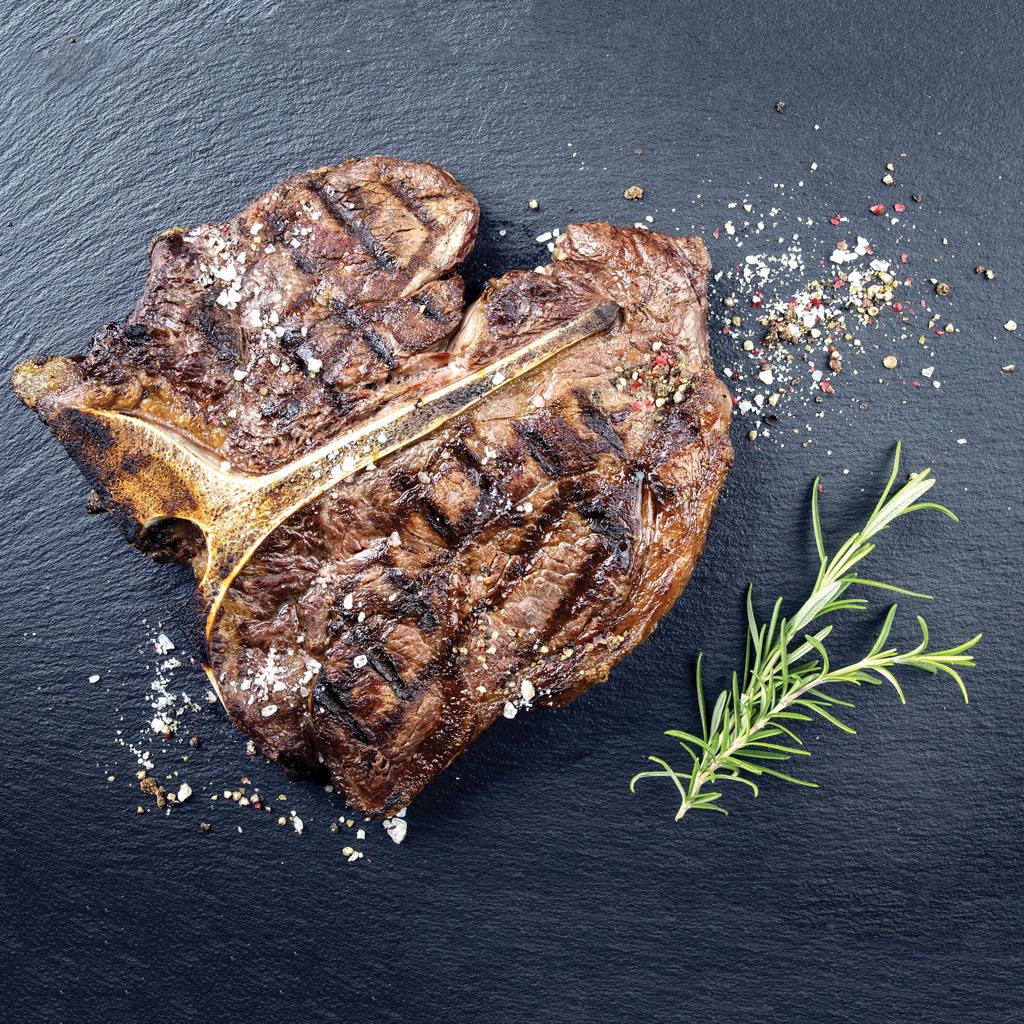
Beefsteak Florentine
There are many variations of this dish. Some cooks like to squeeze fresh lemon juice over the steak before serving. Others like to marinate the meat in red wine. This basic recipe allows room to customize your steak, if desired.
3 cloves garlic, finely chopped
2 teaspoons dried rosemary or 2 tablespoons fresh
1⁄2 teaspoon salt
1⁄4 teaspoon black pepper
2 Porterhouse or T-bone steaks, each about 11⁄2
pounds, each about 11⁄2 inches thick
2 teaspoons olive oil
Combine the garlic, rosemary, salt and pepper. Rub it over the steak. Place the steak in the refrigerator and let sit at least 30 minutes. In the meantime, prepare a grill.
Let steaks come to room temperature before placing on the grill. Grill to desired doneness, turning once, about 5 minutes per side for rare, 7 minutes per side for medium-rare. For perfect grill marks, do not move the steaks around on the grill. When the steak is done, let it rest about 10 minutes before slicing. Carve the meat off the bone, then cut into 1-inch slices. Transfer the slices to a platter. Drizzle with olive oil, if desired. Makes 6 servings.

Rustic Peach Tart with Strawberries and Blueberries
Crust:
1 1⁄2 cups flour
1⁄4 teaspoon salt
2 teaspoons sugar
5 tablespoons olive oil
1 teaspoon almond extract
2 tablespoons melted butter
4 tablespoons milk
Filling:
1⁄2 cup strawberry preserves
3 cups peeled and sliced peaches
2 cups strawberries
1⁄2 cup blueberries
Pinch of sugar
Preheat oven to 425°F.
To make the crust: Combine flour, salt and sugar in a bowl. Slowly add the olive oil and mix with a fork until crumbly. Set aside. In another bowl, mix together almond extract, butter and milk. Add 1 tablespoon at a time to the flour mixture and continue to mix with a fork until dough stays together.
Shape the dough into a ball. Place the ball on parchment paper and roll out until as thin as possible, about 1/8-inch thick. Use flour on rolling pin to prevent sticking.
Spread the preserves in an 8-inch circle over the crust, and top with sliced peaches. Carefully fold up edge of crust over the peaches. Keep tart on paper and lift onto baking sheet. Top with berries. Sprinkle with sugar. Bake for 20 to 25 minutes, until crust is light brown. Cool for 1 hour and serve.
Makes 8 servings.
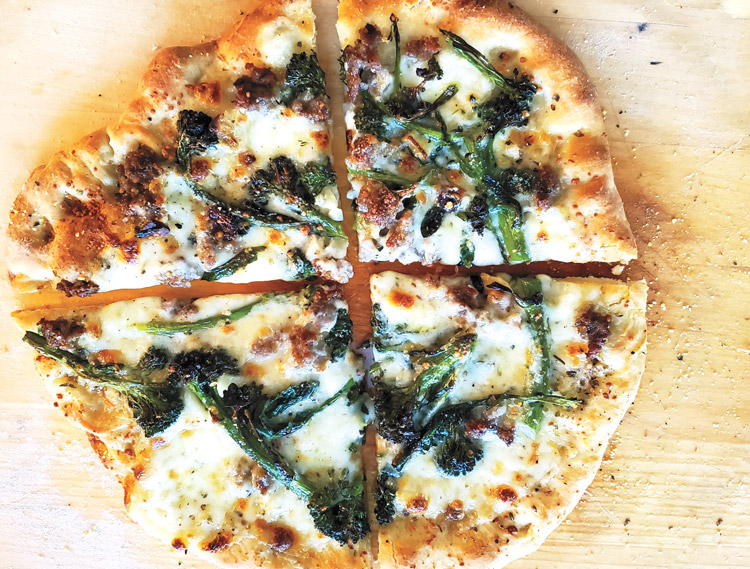
Pizza with Sausage and Broccoli Rabe
1 pizza dough
1⁄2 teaspoon olive oil
Sea salt
1 tablespoon minced garlic
3 broccoli rabe stalks, chopped
1 clove garlic, sliced thin
1 pinch red pepper flakes
3 ounces sausage
2 ounces mozzarella cheese, torn into pieces
2 tablespoons freshly grated Pecorino Romano cheese
1 tablespoon fresh basil
Salt and pepper, to taste
Preheat oven to 550°F.
On a floured surface, press out the dough to a round circle. Lightly brush with olive oil and add a sprinkle of sea salt. Sprinkle on the minced garlic.
In a medium skillet, combine broccoli rabe, garlic, red pepper flakes and sausage. Sauté until broccoli is almost tender and sausage is cooked.
Top the pizza with broccoli-sausage mixture plus cheeses. Bake for 6 to 8 minutes or until cheese melts. Remove from oven, sprinkle on basil, salt and pepper, and serve.
Makes 2 servings.
Cooking Tips:
1. Preheat oven to 500°F or higher, if possible — not broil.
2. Use a pizza stone for cooking the pizza. Preheat the stone at the highest temperature for 60 minutes. If you do not have a stone, use a flat metal baking sheet.

chocolate-dipped almond coconut macaroons
2 egg whites
1 teaspoon almond extract
1⁄2 cup granulated sugar
1⁄4 teaspoon salt
31⁄2 cups sweetened, flaked coconut
6 ounces dark chocolate chips
Preheat oven to 350°F. Cover a baking sheet with parchment paper and set aside.
In a large bowl, beat egg whites, almond extract, sugar and salt until frothy. Fold in the coconut until well blended.
Using a large tablespoon of batter, drop the cookies onto parchment paper about 2 inches apart. Bake for 24 to 28 minutes, until lightly golden. Remove and let cookies cool.
When fully cooled, make chocolate by simmering the chocolate chips in a bowl over a boiling pot of water until melted. Dip the bottom of cool cookies into chocolate and place on a baking rack upside down to solidify. Serve when chocolate is set.
Makes 18 to 20 cookies.
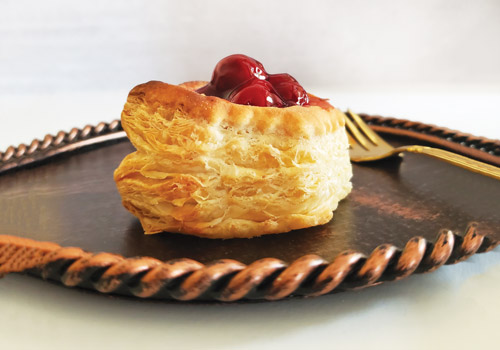
puff pastries with rum cream and fruit
12 premade puff pastry shells
Rum Cream:
2 cups whole milk
1⁄4 teaspoon salt
2 teaspoons rum extract
2⁄3 cup granulated sugar, divided
1⁄4 cup cornstarch
4 large egg yolks at room temperature
2 tablespoons butter, cut into small pieces
Fruit:
1 can cherry (or apple) pie filling mix, or fresh fruit
in season (berries, bananas, etc.)
Bake puff pastries according to package directions.
To make cream: Whisk together milk, salt, rum extract and 1/3 cup sugar in a medium saucepan. Cook on medium high heat, whisking to mix, for 1 to 2 minutes until sugar dissolves. Remove from heat.
In a large bowl, whisk together cornstarch, egg yolks and remaing 1/3 cup sugar until smooth. While continuing to whisk, slowly add the milk mixture, a little at a time, until combined and smooth.
Pour mixture back into saucepan and heat on medium. Whisk constantly until the texture of pudding. Remove from heat, whisk in butter, top with plastic wrap and refrigerate for 2 to 3 hours. Remove and whisk again until smooth.
To assemble: Take each puff pastry and add cream to base. Add choice of fruit. Top with whipped cream, if desired, and serve.
Makes 12 servings.
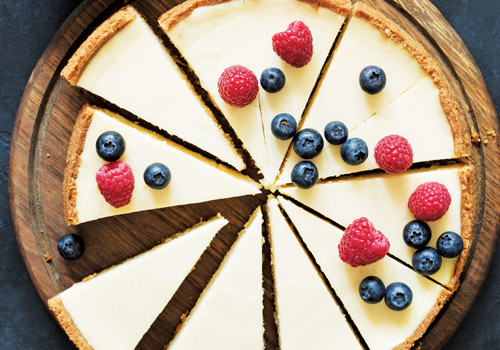
Cheesecake with FRESH BERRIES
Crust:
21⁄2 cups graham cracker crumbs
4 tablespoons melted butter
1⁄4 cup brown sugar
Water as needed to form crust
Filling:
3 8-oz. packages cream cheese,
softened
3 eggs
3⁄4 cup sugar
2 teaspoons fresh lemon juice
1 teaspoon grated lemon zest
1 teaspoon vanilla extract
Topping:
1 cup sour cream
1⁄3 cup sugar
1 6 oz. basket fresh berries
Sprig of fresh mint for garnish, if desired
Preheat oven to 375°F.
To make crust: In a medium bowl, combine graham cracker crumbs, melted butter and brown sugar. Add water, one teaspoon at a time, until mixture is crumbly. Press onto bottom and sides of a 9-inch springform pan. Refrigerate until ready to use.
To make filling: In a mixing bowl, combine cream cheese, eggs, sugar, lemon juice, lemon zest and vanilla extract. Beat with an electric mixer until smooth and creamy.
Pour filling into crust and bake for about 40 minutes. Remove from oven and increase oven temperature to 450°F.
To make topping: Whisk together sour cream and sugar until well combined. Spread over cheesecake. Return cheesecake to oven and bake for 15 minutes. Let cool on rack for 30 minutes, then refrigerate at least 4 hours before removing from pan.
Top with fresh berries and garnish with a sprig of fresh mint, if desired.
Makes 16 servings.
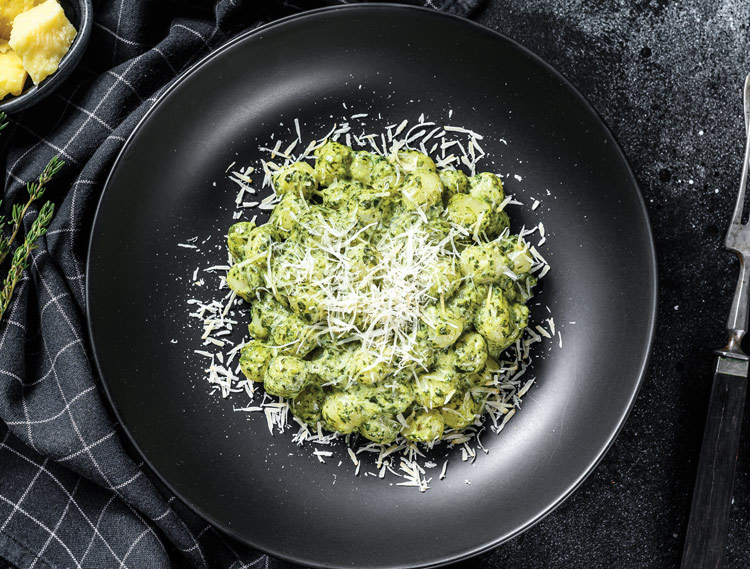
Gnocchi with Spicy Herb Sauce
Gnocchi
1 pound Russet potatoes, peeled, boiled and mashed
1⁄2 cup flour
1 egg
1 teaspoon salt
1⁄4 cup olive oil
Sauce
1⁄2 cup extra virgin olive oil
1 cup flat-leaf parsley leaves
1 cup basil leaves
2 tablespoons pine nuts
4 tablespoons capers
2 garlic cloves, sliced
2 tablespoons fresh lemon juice
1⁄2 teaspoon dried chile flakes
Salt and pepper to taste
Parmigiano-Reggiano
Combine the gnocchi ingredients in a food processor until well mixed. Divide the dough into two large balls, then roll out each ball to form a rope 3/4-inch in diameter. Flick short pieces off with a fork and drop into boiling water. When they rise to the top, they are done.
Meanwhile, combine sauce ingredients in a food processor or blender and pulse until a paste forms.
To serve, toss together the sauce and gnocchi and sprinkle with freshly grated or shredded Parmigiano-Reggiano cheese.
Makes 4 servings.
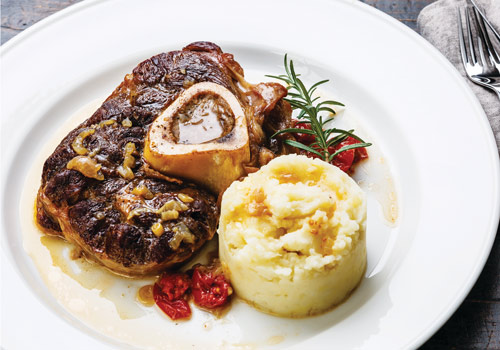
Osso Buco
2 tablespoons olive oil
6 veal shank cross cuts, cut 1 to 1 1⁄2 inches thick
(3 to 31⁄2 pounds)
Salt, to taste
1⁄2 cup dry white wine
1 (16-oz.) can whole tomatoes, undrained
1 (6-oz.) can tomato paste
2 teaspoons each dried basil and dried rosemary
1⁄4 teaspoon each ground black pepper and ground red pepper
2 tablespoons butter
1 large onion, finely chopped
1 medium carrot, finely chopped
1 rib of celery, finely chopped
2 cloves of garlic, minced
Gremolata:
1⁄4 cup finely chopped fresh parsley
1 teaspoon grated lemon peel
1 finely chopped garlic clove
Heat the olive oil in a large skillet over medium heat. Brown the veal, one-third at a time; remove from the skillet. Season with salt. Pour off the drippings. Add the wine; cook and stir until browned bits attached to the skillet are dissolved. Stir in tomatoes, tomato paste, basil, rosemary and black and red peppers. Bring the mixture to a boil. Reduce the heat and simmer 10 minutes.
Melt the butter in a Dutch oven over medium heat. Add the onion, carrot, celery and minced garlic. Cook and stir until the vegetables are crisp-tender. Add the veal and the tomato sauce mixture. Bring to a boil, then reduce the heat. Cover tightly and simmer 2 hours or until the veal is fork-tender.
For the gremolata: Combine the chopped fresh parsley, grated lemon peel and finely chopped garlic clove. Sprinkle over the veal and tomato sauce mixture. Let stand, covered, 2 minutes before serving.
Serving suggestion: Serve with polenta or mashed potatoes.
Makes 6 servings.
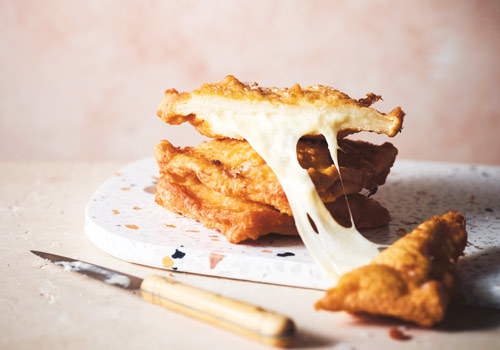
Mozzarella in Carrozza
(Mozzarella ‘In a Carriage’)
Eleonora, who gave me this recipe, says that the native Roman mozzarella in carrozza – ‘in a carriage’ – must be eaten with your hands, and that the name pays homage to the long stretchy ribbons of melted cheese, which recall the reins of horse-drawn carriages. Eleonora is Roman-American and grew up eating these fried-to-golden- perfection treats. Tuck into it immediately – and with your hands, remember – before it becomes gummy and loses its sinfully crisp character. In Rome, these are found at take-away outlets like the friggitoria, or on the menu at pizzerie as a pre-pizza snack. Often, unlike Eleonora’s version, they are crumbed.
400 grams (14 ounces) buffalo
mozzarella
8 slices of white bread, crusts
removed
400 grams (22⁄3 cups 00 flour or plain
(all-purpose) flour
4 eggs, beaten
100 ml (31⁄2 fluid ounces) cold milk
500 ml (2 cups) vegetable oil, for frying
Cut the mozzarella into thin slices, then blot on paper towel to remove any excess moisture which would make the bread soggy.
Evenly distribute the mozzarella on four of the bread slices, leaving a 1 cm (1/2 in) margin around the edge. Top with the remaining bread slices. Using your fingers, crimp the sandwiches around the edges to seal them into pockets, to prevent the cheese escaping.
Place the flour in a bowl. In a separate bowl, mix together the beaten eggs, milk and a good pinch of salt.
Heat the vegetable oil in a wide, heavy-based frying pan until about 180°C (350°F) on a cooking thermometer.
Coat the sandwiches with a little flour, then dip them into the egg mixture, making sure all the sides are covered (this can get messy). Using a spatula, carefully lower the sandwiches into the hot oil in a couple of batches and cook for 5–6 minutes, turning often, until both sides are golden and crisp.
Drain on paper towel and eat piping hot.
Makes 4 servings.
– Recipe by Eleonora Baldwin, The Eternal City: Recipes and Stories from Rome by Maria Pasquale (Smith Street Books, 2023)
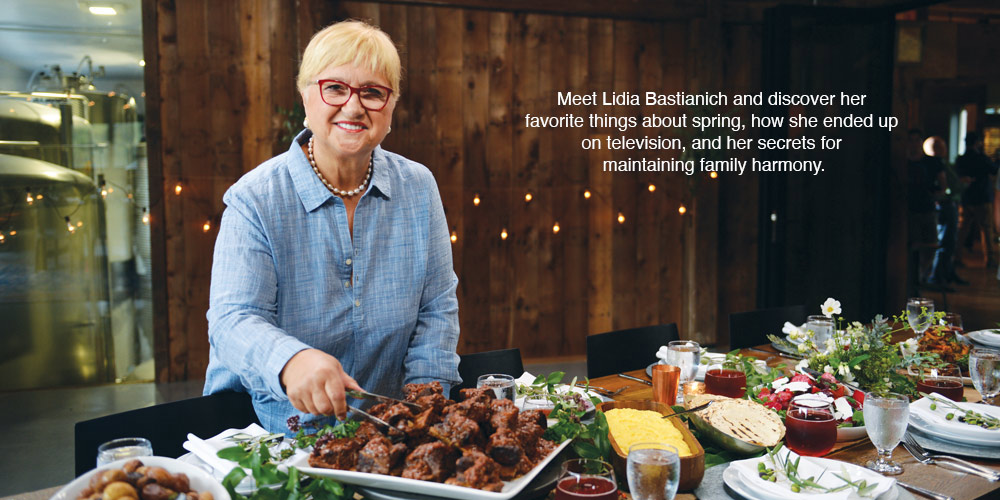
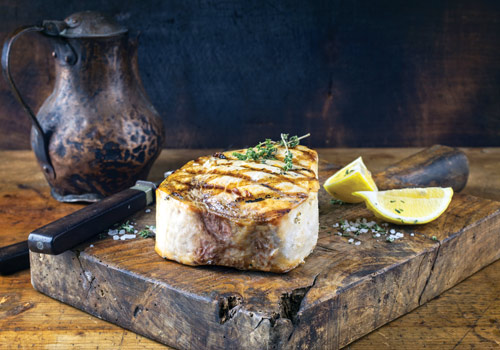
Sicilian Swordfish
2 tablespoons fresh lemon juice
2 tablespoons table salt
2 teaspoons chopped fresh oregano (or 1 teaspoon dried)
Pinch of red pepper flakes
1⁄4 cup extra virgin olive oil
1⁄4 cup capers, drained
Freshly ground pepper
2 pounds swordfish steaks, cut
1/2-inch thick
Light a grill or preheat the broiler.
In a small bowl, mix the lemon juice with the salt until the salt dissolves. Stir in the oregano and red pepper flakes. Slowly whisk in the olive oil and capers, and generously add pepper.
Grill the swordfish steaks over high heat (as close to the heat as possible), 3 minutes per side, until cooked through. Place the fish on a platter. Use a fork to prick the surface to allow the sauce to penetrate. Drizzle sauce over the fish. Serve immediately.
Makes 4 to 6 servings.
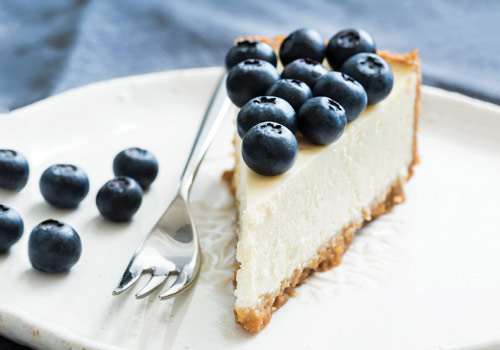
Spring Cheesecake with Blueberries
Crust:
2 1⁄2 cups graham cracker crumbs
4 tablespoons melted butter
1⁄4 cup brown sugar
Water as needed to form crust
Filling:
3 (8-oz.) packages mascarpone cheese, softened
3 eggs
3⁄4 cup sugar
2 teaspoons fresh lemon juice
1 teaspoon grated lemon zest
1 teaspoon vanilla extract
Topping:
1 cup sour cream
1⁄3 cup sugar
1 (6-oz.) basket fresh blueberries
Preheat oven to 375°F.
To make crust: In a medium bowl, combine graham cracker crumbs, melted butter and brown sugar. Add water, one teaspoon at a time, until mixture is crumbly. Press onto bottom and sides of a 9-inch springform pan. Refrigerate until ready to use.
To make filling: In a mixing bowl, combine filling ingredients. Beat with an electric mixer until smooth and creamy. Pour filling into crust and bake for about 40 minutes. Remove from oven and increase oven temperature to 450°F.
To make topping: Whisk together sour cream and sugar until well combined. Spread over cheesecake. Return cheesecake to oven and bake for 15 minutes. Let cool on a rack for 30 minutes, then refrigerate for at least 4 hours before removing from pan. Top with fresh blueberries.
Makes 12 servings.
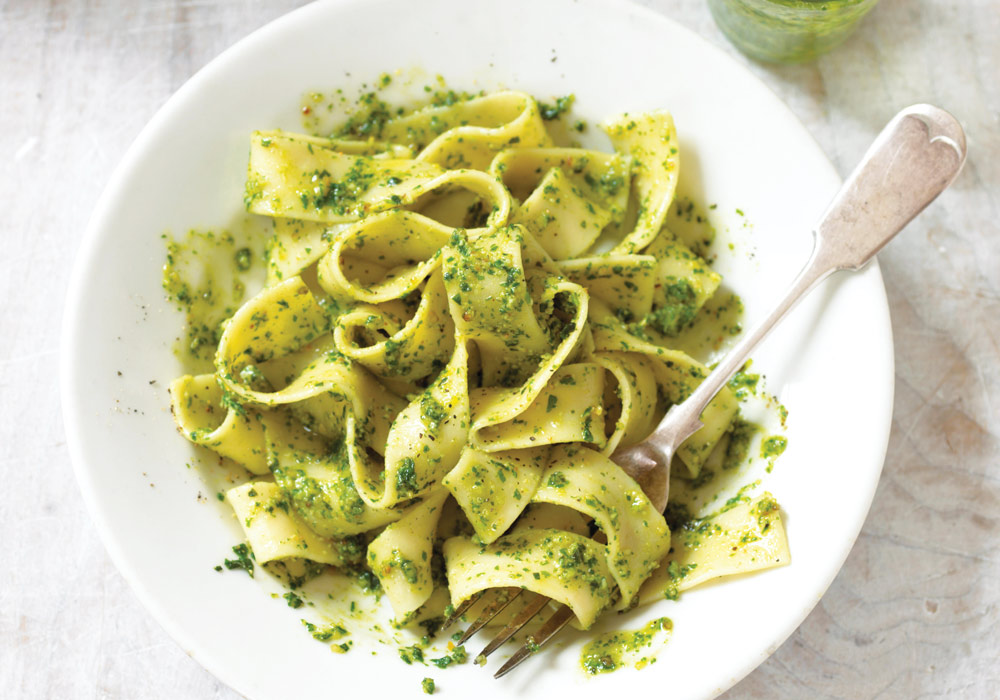
Pappardelle al Pesto
2 1⁄2 cups fresh spinach
2 cloves garlic, peeled
1⁄4 teaspoon salt
1⁄2 cup freshly grated Parmigiano-Reggiano
3 tablespoons freshly grated Pecorino Romano
1⁄4 cup pine nuts
1⁄2 cup olive oil, plus more as needed
1⁄2 pound pappardelle
In a food processor, combine the spinach, garlic and salt, and process until it has formed a paste. Add the cheeses and pine nuts and process until smooth. Slowly add the olive oil, processing as you go. If the pesto is too thick, add more olive oil to achieve desired consistency.
Cook the pasta according to package directions; drain. Taste for salt and pepper. Toss with pesto to serve.
Makes 4 servings

Balsamic Roast Chicken
1 cup balsamic vinegar
1⁄2 cup broth or water
3 cloves garlic, diced
3 basil leaves, chopped
1 bay leaf
2 pounds boneless,
skinless chicken
1 teaspoon sea salt
1 teaspoon freshly ground black pepper
2 tablespoons olive oil
In a large glass bowl, combine the vinegar, water, garlic, basil and bay leaf. Mix well. Add the chicken and coat with the mixture. Refrigerate and marinate for at least 1 hour or overnight.
Remove the chicken from the bowl and place on paper towels. Reserve the marinade. Place the chicken on paper towels and sprinkle with salt and pepper.
Place the oil in a large skillet over medium-high heat. Sauté the chicken until browned on all sides. Add the reserved marinade to the skillet and bring to a boil. Lower the heat to a simmer, cover and let cook about 30 minutes, turning the chicken occasionally. Add water a little at time if necessary to keep the liquid from drying out.
When the chicken is done, remove from the skillet onto a platter. Remove bay leaf from the remaining sauce in the pan and serve sauce with the chicken, if desired.
Makes 6 servings.

Clams with Garlic and Wine
6 pounds clams
1⁄4 cup olive oil
4 cloves garlic, minced
1⁄4 cup chopped fresh parsley
1 pinch red chile flakes
2 cups dry white wine
Crusty bread
Soak the clams in cold water for 30 minutes. Clean off any beards. Discard any with cracked shells.
In a large skillet, combine olive oil, garlic, parsley and red chile flakes. Cook on medium heat for 4 minutes. Add clams and wine. Cover and cook about 5 minutes or until clams begin to open. Discard any that do not open. Transfer clams to serving bowls and ladle in pan juices. Serve with crusty bread.
Makes 6 to 8 servings.

Mayor of Flavortown
Emmy-winning TV chef Guy Fieri is a hot ticket in the food world. Often referred to as the Mayor of Flavortown, Fieri recently signed a three-year, $80 million contract with the Food Network, reportedly a $50 million increase from his previous deal. The host of the popular “Diner, Drive-Ins and Dives,” Fieri credits his father and by extension, his Italian roots, for his success. “He’s the one who’s been the biggest influence in my life. He always said to be whatever you want to be,” Fieri says. Fieri’s palate was refined at an early age. Growing up, he loved pasta with tomato sauce, especially if the pasta was well-made. “With really good pasta, it’s got a nice tooth to it. It’s not just cooked al dente, but it’s the texture that comes from the flour its made with, the way it’s dried,” he says. His love of food and an entrepreneurial spirit led him to a degree in hospitality management and later to the Food Network. Learn more about his journey to success and his Italian roots in the Fall issue of Tastes of Italia.
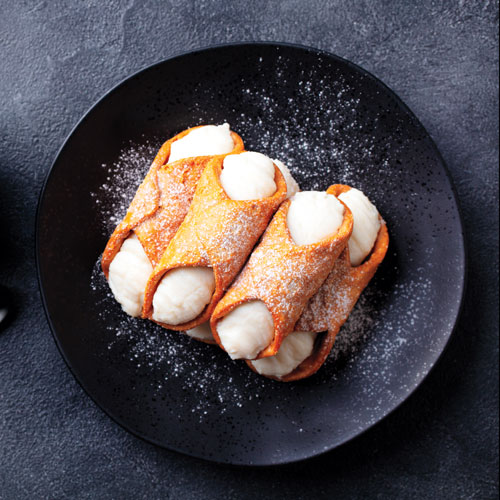
Classic Cannoli
1 (15-oz.) container whole-milk ricotta cheese
1⁄2 cup mascarpone cheese
1⁄3 cup orange marmalade
2⁄3 cup confectioners’ sugar
Pinch of salt
8 large cannoli shells
In the bowl of an electric mixer (or another large bowl), combine the ricotta, mascarpone and orange marmalade. Beat with the wire whip attachment (or regular beaters) until smooth, about 1 minute. Slowly add the sugar and salt and beat until combined. Fill a pastry bag fitted with a large plain tip with the cheese mixture. Pipe the mixture, working from both ends, to fill each cannoli shell. Serve immediately or refrigerate until serving time.
Makes 6 servings.
– Adapted from a recipe from Rocco’s 5 Minute Flavors (Simon and Schuster, 2006).

POACHED PEARS
1⁄2 bottle sweet white wine
(like Riesling)
1 cup water
1⁄4 cup fresh lemon juice
1 cup sugar
1⁄4 teaspoon cinnamon
4 firm, ripe Anjou pears, cored and cut in half
3 ounces gorgonzola cheese
4 teaspoons chopped walnuts
In a large saucepan, bring the wine, water, lemon juice, sugar and cinnamon to a boil. Reduce heat to medium, add the pear halves and simmer for 30 minutes or until pears are tender. Remove the pears and set aside. Continue to simmer the syrup until it thickens.
Place a spoonful of cheese and a half teaspoon of walnuts into the hollowed out part of each pear. Spoon syrup around the pears. Refrigerate until slightly chilled.
Makes 4 servings.
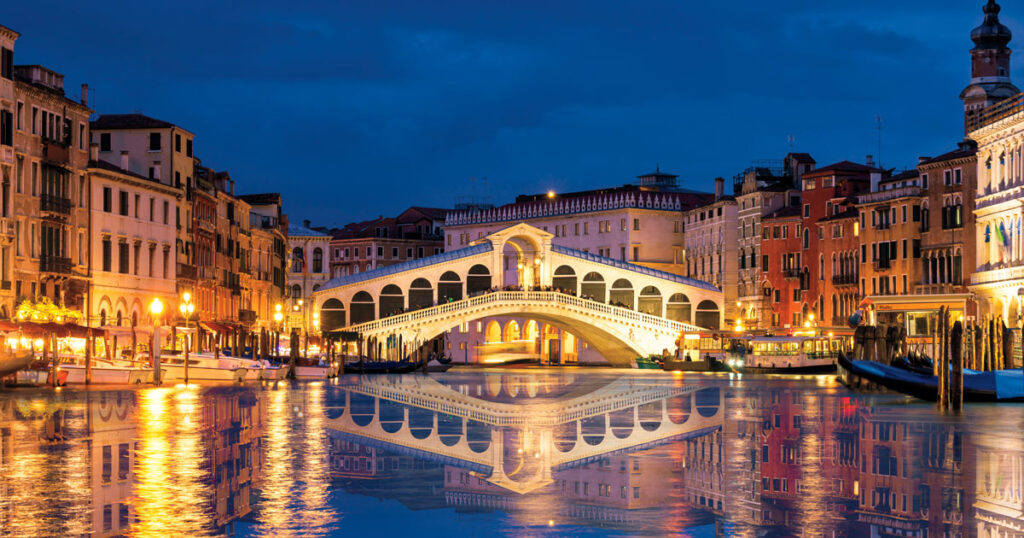
Venetian Holiday
Celebrated as one of the most beautiful cities in the world, Venice is also known as “La Serenissima,” “Queen of the Adriatic,” and “The Floating City,” among other names. Capital of the Veneto region in northeastern Italy, Venice is also an elegant city with deep historical roots, stunning architecture, and fabulous food.
Ride down the Grand Canal where the beauty of centuries-old palazzos is reflected in the water. Glide under the Rialto Bridge, above, and enjoy its grandeur. Originally built as a pontoon bridge in 1173, it is the oldest of four bridges that span the Grand Canal and connects the districts of San Marco and San Polo.
Besides the iconic canals, Venice offers much to see and experience, including St. Mark’s Basilica. Built in the 800s, St. Mark’s is considered the most important religious temple in Venice. Located in the Piazza San Marco, next to the Doge’s Palace, it features a combination of architectural and artistic styles.
During the holidays, the city is especially beautiful. Shrouded in winter fog, palazzos twinkle with festive lights, nativity scenes and concerts fill the churches and holiday craft markets dot the streets.
In the Fall issue of Tastes of Italia, Susan Van Allen transports us to Venice and visits the Peccati di Gola Cooking School where signora Alessandra Molani teaches eager students how to prepare a traditional Venetian lunch. You’ll want to include the recipes in your own holiday menu.

Grilled Salmon
When cooking salmon on a grill, use a fish spatula to turn it, rather than tongs, which could cause the fish to fall apart. If you prefer to not turn the fish, when it is nearly done, place it on the cooler side of the grate, away from the coals, to finish cooking to the desired doneness.
3 tablespoons butter
1 tablespoon olive oil
3 cloves of garlic, finely chopped
1⁄4 cup chopped parsley
1 1⁄2 pounds of salmon filets, thickly sliced Sea salt and peppercorns, to taste
Prepare a grill to hot.
In a pan over medium heat, add the butter, olive oil, garlic and parsley. Stir to combine. Heat until the butter melts.
Brush the marinade over the salmon. Place the salmon, skin side down, on the grill. Cook 6 to 8 minutes, depending on the thickness of the salmon. Gently turn the salmon over and cook 3 to 5 minutes until the salmon is cooked through. (The salmon will be medium-rare when a thermometer inserted into the thickest portion reads 120°F. Adjust the cooking time to the desired degree of doneness.)
Remove from the grill. Season with sea salt and peppercorns. Let the salmon rest a few minutes before cutting into strips and serving.
Makes 4 servings.

Perfect Grilled Eggplant
1 medium eggplant
Salt
Olive oil for brushing
Pepper
Topping:
4 tablespoons extra virgin olive oil
1⁄4 cup chopped fresh parsley
1⁄4 cup chopped fresh basil
1 teaspoon fresh lemon juice
Pinch of salt
Whole basil leaves for garnish, if desired
Trim the top and bottom off the eggplant. Cut the eggplant into 1/2-inch slices and place in a colander, sprinkling each layer with salt. Drain for about 30 minutes. Rinse and pat dry.
Position the grill or broiler rack about 5 inches away from the heat source. Brush the eggplant on one side with olive oil and sprinkle with salt and pepper. Place oiled side facing the heat. Cook until golden brown, about 4 to 5 minutes. Brush the other side with oil and turn the eggplant. Cook about 4 to 5 minutes.
Meanwhile, in a medium bowl, stir together 4 tablespoons olive oil, parsley, basil, lemon juice and salt.
Arrange the eggplant on a platter and top with the olive oil mixture. Garnish with basil leaves, if desired.
Makes 4 servings.
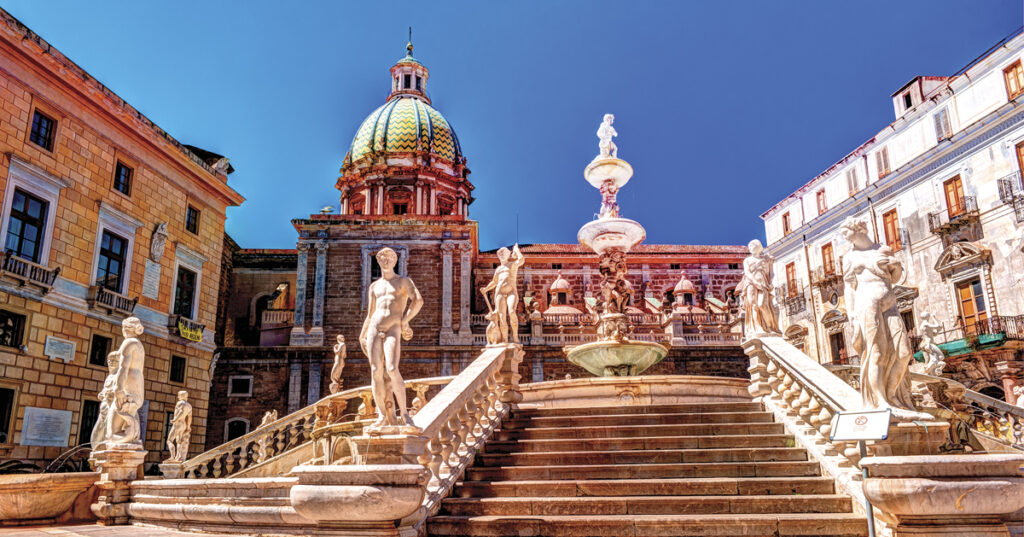
Sicily
Situated off the “toe of the boot” of Italy, Sicily Sicily is the largest island in the Mediterranean Sea, south of the Italian Peninsula. It is home to Mount Etna, one the tallest active volcanoes in Europe, and harbors a rich history.
Because of its location, Sicily has been ruled through the ages by the Greeks, Normans, Carthaginians, Arabs, Spaniards and Romans. The assimilation of these various cultures can be found throughout the fabric of Sicilian life.
Yet, Sicily has its own character, dialect, and food. Pasta and seafood play big roles in Sicilian dishes with sardines, eggplant, and swordfish figuring prominently in many dishes. Save room for desserts like gelato, cannoli and cassata Siciliana, a sweetened ricotta cheese filled sponge cake soaked with liqueur, coated with green marzipan (almond paste) and dotted with candied fruit on top.
The capital city, Palermo, features many important buildings from Arab, Spanish and Norman cultures. To see other sites, take the autostrada to the coast where you can then go north to Taormina and access Mount Etna, or south to the Greek ruins of Siracusa and the Baroque town of Noto.
Sicily offers much to see, do and taste, so make the most of your visit by planning it well. See visitsicily.info/en/, Sicily’s official tourism site or check with the Italian National Tourist Board North America, italiantourism.com.
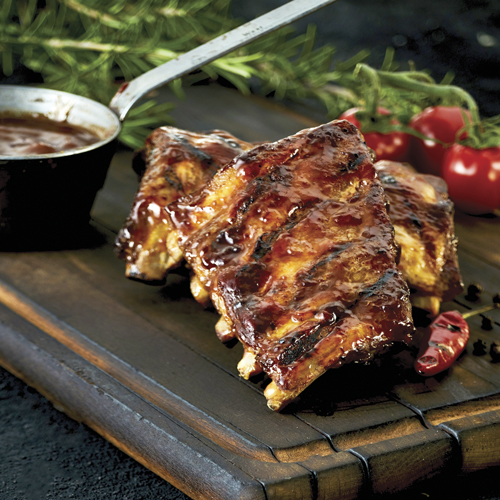
Grilled Spareribs
2 pounds lean pork spareribs
1⁄3 cup olive oil
Juice of 1 lemon
2 tablespoons tomato paste
Salt and pepper, to taste
Freshly minced parsley
Cut the ribs into four equal sections and place on a large plate; set aside.
In a small bowl, whisk together olive oil, lemon juice and tomato paste. Coat the ribs with the mixture and season with salt and pepper. Cover and refrigerate for 2 hours.
When ready to cook the ribs, heat the grill on high. Using a pastry brush, carefully coat the grill with some olive oil. Place the ribs on the grill and turn every 7 to 8 minutes, brushing with the marinade. When the ribs are cooked all the way through, they should be crisp and well done. Remove the ribs from the grill and let sit for 5 to 7 minutes before serving. Brush with extra olive oil and sprinkle with parsley.
If desired, grill tomatoes, peppers or other vegetables to serve with the ribs.
Makes 4 servings.
Editors’s note: This is the way you might find ribs cooked in Florence. For your table, it’s okay to add some barbecue sauce if you wish.
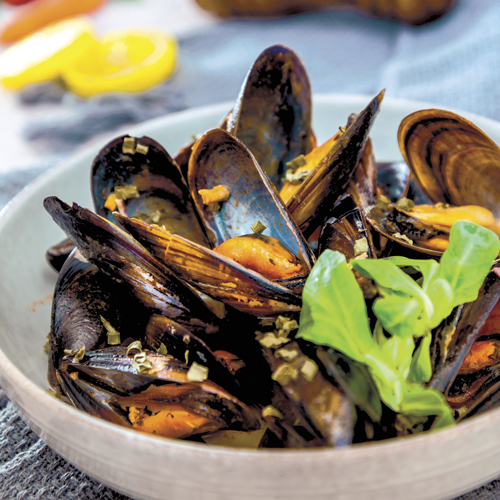
Mussels with Garlic and White Wine
6 pounds mussels
1⁄4 cup olive oil
4 cloves garlic, minced
1⁄4 cup chopped fresh parsley
1 pinch red chile flakes
2 cups dry white wine
Crusty bread, if desired
Basil leaves, for garnish, if desired
Soak the mussels in cold water. Clean off any beards. Discard any with cracked shells. Set aside.
In a large skillet, combine olive oil, garlic, parsley and red chile flakes. Cook on medium heat for 4 minutes. Add the mussels and wine. Cover and cook about 5 minutes or until the shells begin to open. Discard any that do not open. Transfer the mussels to serving bowls and ladle in the pan juices.
If desired, serve with crusty bread and garnish with basil leaves.
Makes 8 servings.
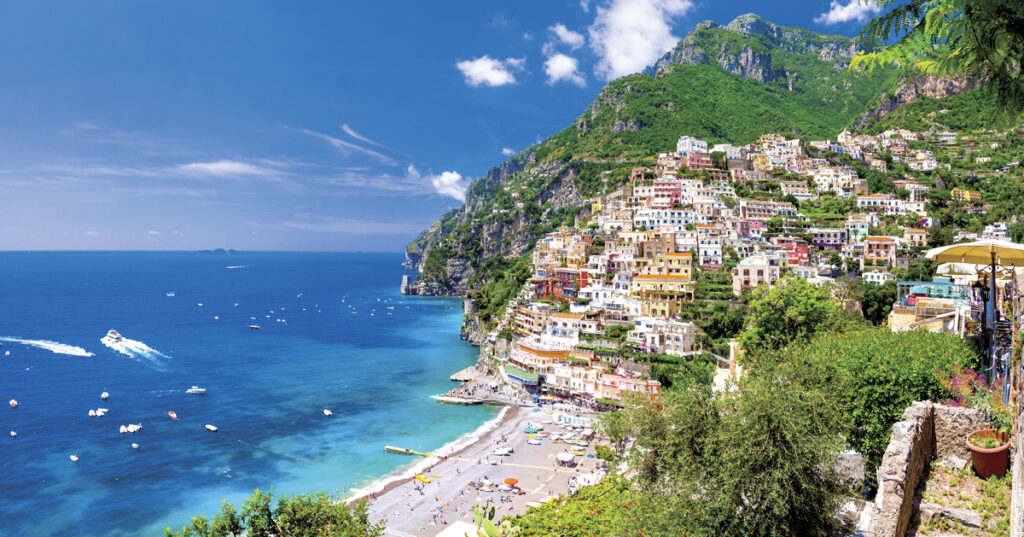
Positano
One of the charming villages along the Amalfi Coast, Positano is more than just a destination; it’s an experience.
The Amalfi Coast stretches for 37 miles along Italy’s Sorrentine Penninsula and is known for its grottos, rugged cliffs and shimmering bays. Positano features all those things. It lies between the glistening waters of the Mediterranean Sea and the peaks of the Lattari Mountains. While the entire Amalfi Coast is a UNESCO World Heritage Site, Positano is a must-see stop on your itinerary.
A small village, you can see most of Positano’s main attractions in a day or less. One of the most famous sites is the colorful majolica cupola of the Church of Santa Maria Assunta, which houses the Byzantine Madonna Nera. Next to the church, you can see the recently excavated ruins of a seaside villa with frescos similar to those found in Pompeii. The Roman Archaeological Museum where the villa is located is open year round for guided visits. You can also see three watchtowers that were built along the coast to protect locals from pirates.
Known as the “Vertical City” because of its colorful structures built into the mountainsides, Positano has appeared in many films including Under the Tuscan Sun, which starred Diane Lane and Sandra Oh, and Only You with Robert Downey, Jr. and Marisa Tomei. John Steinbeck stayed in Positano many times and wrote about his visit for Harper’s Bazaar in 1953. The famous Neapolitan song “Scalinatella” was inspired by the long, narrow staircase in Positano called Via Trara Genonino, which leads from Punta Reginella down to near the Marina Grande beach.
Positano’s cuisine is rich in fish and seafood, along with many types of fruits and vegetables. Lemons are abundant along the Amalfi Coast, so you’ll find them used in many dishes. Learn more at positano.com.
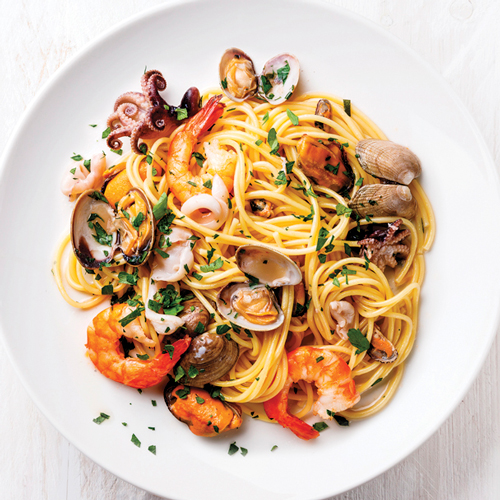
Seafood Pasta (Spaghetti di Mare)
1⁄2 pound spaghetti
1⁄3 cup olive oil
4 garlic cloves, diced
1 pinch red pepper flakes
1 can (141⁄2 oz.) whole tomatoes, drained and crushed by hand
1 pinch salt
1⁄2 cup white wine
1⁄2 pound scallops
1⁄2 pound large shrimp, peeled and deveined
8 clams
1⁄4 pound squid
2 tablespoons lemon juice
3 tablespoons butter
1⁄4 cup chopped parsley
Salt and pepper, to taste
Cook past a according to package directions.
Meanwhile, in a large skillet, combine olive oil, garlic and red pepper flakes. Cook on medium for 3 minutes. Add tomatoes, salt and wine. Bring to a boil, then add scallops, shrimp, clams, squid and lemon juice. Reduce heat and simmer for 4 minutes. Add butter and parsley and cook for 2 minutes. Taste for salt and pepper.
Drain cooked pasta and add it to the skillet, stirring well to coat.
Makes 4 servings.
Note: Some stores now sell premixed frozen seafood that works well with this recipe.

Braised Short Ribs
3 tablespoons olive oil
2 tablespoons butter
6 lean short ribs
Salt and pepper, to taste
2 tablespoons fresh chopped rosemary
3 celery stalks, chopped
2 carrots, peeled and chopped
2 medium onions, chopped
3 cups dry red wine
2 cups beef broth
1 bay leaf
1⁄2 cup fresh chopped parsley
In a large pot, heat the olive oil and butter on high. Salt and pepper the short ribs and add them to the pot. Brown on all sides. Add rosemary, celery, carrots, onions, wine, broth and bay leaf and bring to a boil. Reduce heat to simmer, cover pot and cook for 3 hours.
When ready to serve, remove the bay leaf, set the beef aside, and purée the vegetables into a sauce. Serve the sauce with the short ribs and a sprinkle of parsley.
Makes 4 to 6 servings.
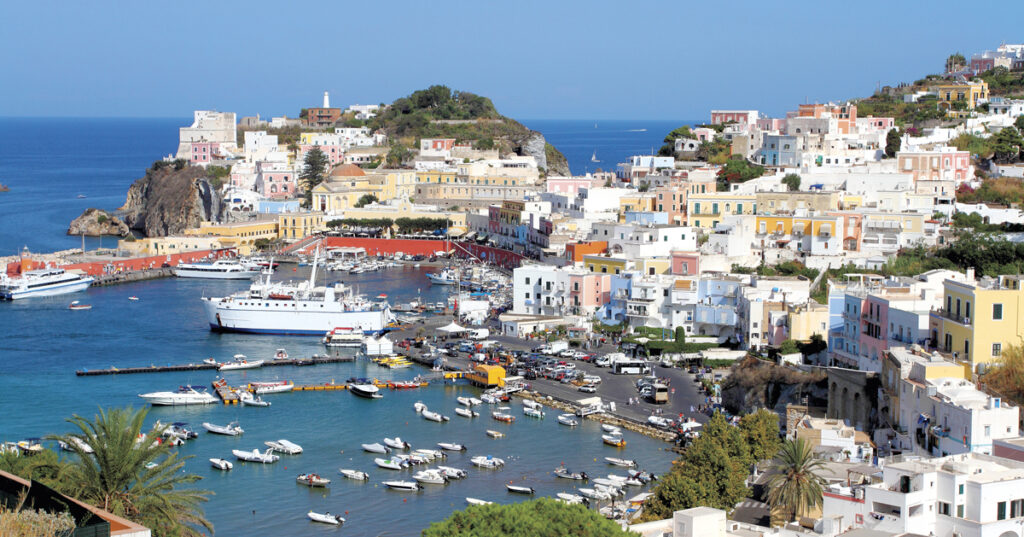
Ponza
Located about 20 miles south of Cape Circeo in the Tyrrhenian Sea, Ponza is part of the Itlain Pontine Island archipelago. It is also the name of the commune of the island, a part of the province of Latina in the Lazio region. A popular summer retreat for many Italians, some call it “Capri without the tourists,” but offers all the beauty and amenities. Historians say that during the reign of the Roman Empire, nobility built vacation villas on the island. When the empire fell, the island was abandoned. It was eventually repopulated and now has a year round population of about 3,500. That number swells with visitors in the summer as they arrive to enjoy the beaches, hotels, dining spots and natural beauty. In addition to sunbathing, swimming, and scuba diving, visitors can tour Ponza’s shoreline and nearby islands by boat and explore the Grotte di Pilato, a complex network of tunnels dug into Ponza’s cliffs that dates to Roman times. The historic center of Ponza, Centro Storico, features colorful buildings, fresh markets, artisan boutiques, and dining spots, including Acqua Pazza, a Michelin-star restaurant. Visit La Chiesa dei Santi Silverio e Domitilla, a well-known church on the island. To get to Ponza, visitors take a ferry, either from Rome or Naples. For more, see www.visitponza.it/en/
Above: The island of Ponza in the Tyrrhenian Sea.
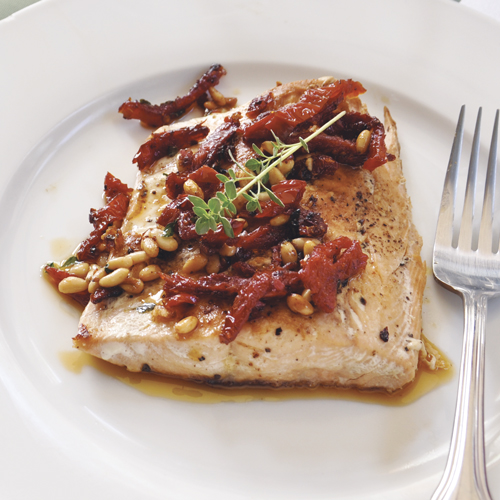
Pan Roasted Salmon with Sundried Tomatoes and Pine Nuts
2 6-oz. salmon fillets
2 tablespoons olive oil, divided
Salt and pepper to taste
1⁄3 cup sliced sundried tomatoes, drained 1 shallot, minced
1 garlic clove, minced
1⁄4 cup red wine
2 teaspoons chopped fresh thyme
2 tablespoons pine nuts
Preheat oven to 350°F. In a large oven-proof skillet, heat 1 tablespoon olive oil on stove until oil just begins to smoke. Add salmon and season with salt and pepper. Cook 3 minutes, then remove from heat and cover with a lid. Place in oven and cook about 10 minutes, until skin is very crisp. To make the sauce: Add 1 tablespoon olive oil to a medium skillet. Add tomatoes, garlic and shallot, and cook about 4 minutes on medium heat. Add wine, thyme and pine nuts, stirring to mix well. Cook for 4 to 5 minutes, taste for salt and pepper, and serve with salmon.
Makes 2 servings.
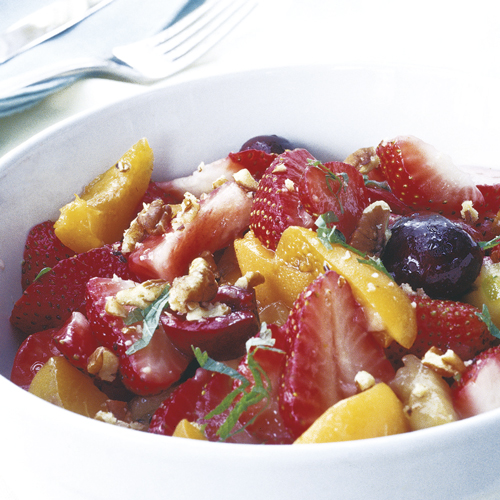
Honey Orange Fruit Salad
1 cup sliced strawberries
1 cup grapes
1 cup sliced kiwifruit
1 cup pitted cherries, halved
1 tablespoon fresh chopped mint
1 medium banana, sliced
1⁄4 cup chopped toasted pecans
2 tablespoons fresh orange juice
1 tablespoon fresh lemon juice
1 tablespoon honey
Mint leaves for garnish
Combine fruit, mint and pecans in a large bowl. Set aside. Whisk together orange juice, lemon juice and honey. Add to fruit and toss well. Garnish with mint leaves.
Makes 6 to 8 servings.
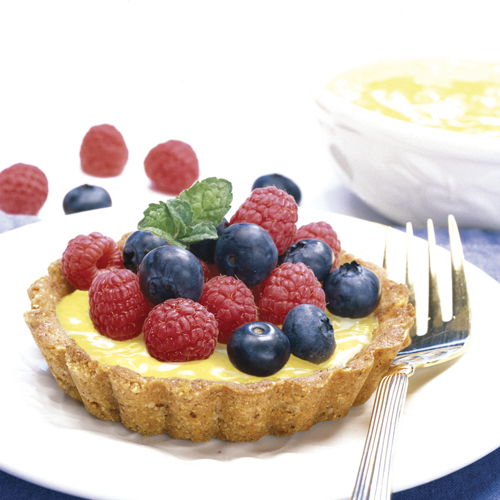
Lemon Cream Tarts with Almonds
Pastry:
32 vanilla wafer cookies
1⁄2 cup toasted almonds, processed to almost powder (or use almond flour)
2 tablespoons melted butter
2 tablespoons water
1 teaspoon almond extract
Filling:
1⁄4 cup cornstarch
1 cup sugar
1⁄3 cup cold water
1 cup hot water
1⁄2 cup lemon juice
1 teaspoon grated lemon rind
2 large egg yolks
2 tablespoons melted butter
Topping:
Fresh raspberries
(and blueberries if desired)
Preheat oven to 425°F.
To make tart crusts: Process wafers until finely ground. Combine with ground almonds in a bowl and slowly mix in butter and water, stirring with a fork to blend well. Stir in almond extract. Lightly spray six tart pans, approximately 3-inches in diameter with removable bottoms, with nonfat cooking spray. Divide dough mixture evenly and press into tart pans. Press dough to edges first, then fill in the bottoms. Place tart pans on baking sheet and bake for 10 minutes. Remove from oven and let cool. To make filling: In a medium saucepan com-bine cornstarch and sugar. Stir in cold water first, then hot water. Cook on medium heat, stirring constantly, until mixture thickens and is clear, about 10 minutes. Remove from heat. Stir in lemon juice and grated lemon rind. Re-turn to heat and cook 2 minutes. Place egg yolks in a bowl and beat slightly. Remove 1/2 cup filling mixture from saucepan and slowly stir into egg yolks. Slowly return egg mixture to saucepan, add butter, and cook for 2 minutes, stirring constantly. Remove from heat, let cool, and pour into tart crusts. Top each tart with fresh berries and serve immediately, or refrigerate filling until ready to serve.
Makes 6 servings.
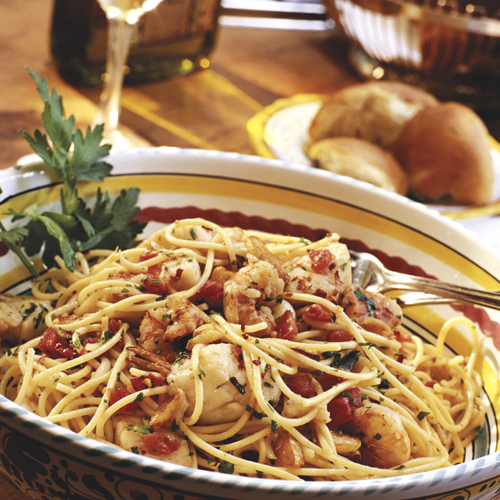
Spaghetti with Scallops and Shrimp
1⁄2 pound spaghetti
3 tablespoons olive oil
4 cloves garlic, minced
1 can (141/2 oz.) whole tomatoes, drained and chopped
1⁄2 teaspoon coarse salt, plus extra if desired
1⁄4 teaspoon red pepper flakes
1⁄4 teaspoon ground black pepper
1⁄2 cup white wine
1⁄2 pound scallops
1⁄2 pound large shrimp
3 tablespoons butter
2 tablespoons chopped parsley
Cook spaghetti according to package directions. While pasta is cooking, prepare sauce: Heat oil in a large, nonstick skillet. Sauté garlic for 2 minutes. Stir in tomatoes, 1/2 teaspoon salt, red pepper flakes, black pepper and wine. Cook for 5 minutes. Add the scallops, shrimp and butter. Cook over high heat for 3 to 4 minutes. Drain the cooked pasta and add the pasta to the skillet. Toss with sauce. Add the chopped parsley and additional salt, if desired.
Makes 4 to 6 servings.
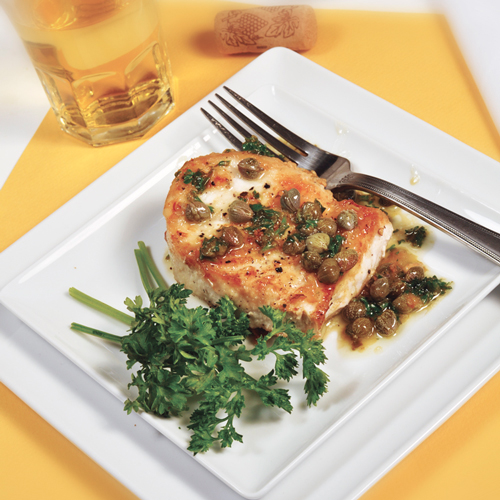
Sicilian Swordfish in a Lemon Caper Sauce
4 swordfish steaks, 1/2-inch thick
1⁄2 cup flour
Kosher salt and freshly ground black pepper
6 tablespoons olive oil, divided
Juice of 2 lemons
Zest of 1 lemon
1⁄3 cup minced fresh parsley
1⁄4 cup capers, rinsed and drained
In a baking dish, stir together flour, salt and pepper. Pat the fish dry, then lightly coat them with the flour mixture.
In a large skillet, heat 4 tablespoons of olive oil on medium. When oil is almost smoking, add the fish and cook 3 to 4 minutes per side. Remove the fish and place on warm platter; cover with paper towels.
Quickly discard all the oil in skillet and add remaining 2 tablespoons oil to the skillet. Add the lemon juice, zest, parsley and capers and bring mixture to a boil. Serve sauce with fish.
Makes 4 servings.
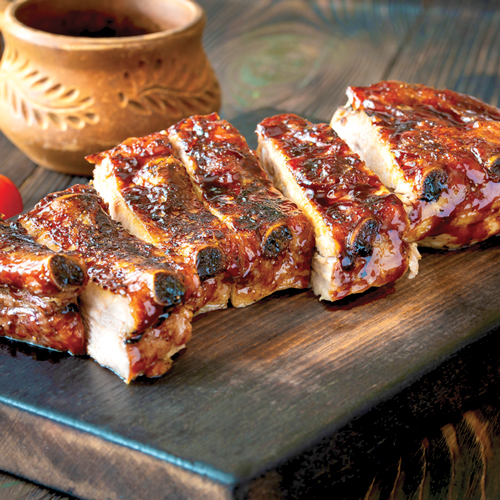
Grilled Spareribs
2 pounds lean pork spareribs
1⁄3 cup olive oil
Juice of 1 lemon
2 tablespoons tomato paste
Salt and pepper to taste
Extra olive oil for brushing
Freshly minced parsley
Cut the ribs into 4 equal sections and place on a large plate. In a small bowl, whisk together olive oil, lemon juice and tomato paste. Coat the ribs with the mixture and season with salt and pepper. Cover and refrigerate for 2 hours.
When ready to cook ribs, heat the grill on high. Using a pastry brush, carefully coat the grill with some olive oil. Place the ribs on the grill and turn every 7 to 8 minutes, brushing with the marinade. When ribs are cooked all the way through, they should be crisp and well done. Remove ribs from grill and let sit for 5 to 7 minutes before serving. Brush with extra olive oil and sprinkle with parsley.
Makes 4 servings.
Editor’s note: This is the way you might find ribs cooked in Florence. For your table, it’s OK to add some barbecue sauce if you wish!

Tagliatelle with Ragu
1 pound ground beef
1 medium onion, chopped
3 cloves garlic, chopped
1 medium green bell pepper, diced
1 (28-oz.) can diced tomatoes
1 (16-oz.) can tomato sauce
1 (8-oz.) can tomato paste
1 teaspoon dried oregano
1 teaspoon dried basil
1⁄2 teaspoon salt
1⁄2 teaspoon black pepper
1 pound tagliatelle, cooked according to package directions
1⁄2 cup grated Parmesan cheese
In a large skillet or pan, combine the ground beef, onion, garlic, and green pepper. Cook over medium heat, stirring frequently, until the meat is browned and the vegetables are tender. Drain the grease from the pan.
Stir in the diced tomatoes, tomato sauce, tomato paste and seasonings. Simmer at least 1 hour, stirring occasionally.
Serve with cooked tagliatelle and grated Parmesan cheese.
Makes 8 servings.
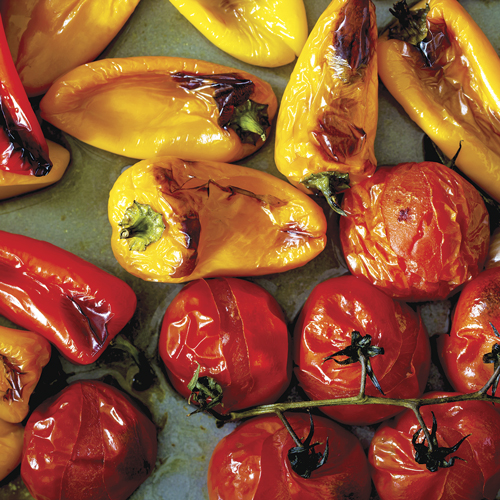
Roasted Sweet Peppers and Tomatoes
1 pound sweet peppers, cleaned, and sliced into lengths
1 pound cherry tomatoes
1⁄4 cup olive oil
6 whole garlic cloves
Sea salt and freshly ground pepper, to taste
Preheat oven to 400°F. Toss the sweet peppers, tomatoes, olive oil, and garlic cloves in a roasting pan. Add sea salt and freshly ground black pepper, to taste. Roast for 30 minutes or until soft and slightly charred.
Makes 4 to 6 servings.

Roasted Chicken with Herbs and Butter
1 whole chicken, about 31⁄2 to 4 pounds
3 garlic cloves, minced
2 tablespoons chopped fresh rosemary
2 tablespoons chopped fresh sage
2 tablespoons chopped fresh parsley
2 tablespoons butter, melted
1 tablespoon olive oil
2 tablespoons fresh lemon juice
1 small lemon, cut in slices
Salt and pepper to taste
Position a rack in center of oven and preheat to 400°F. Place a roasting rack in a roasting pan. Wash chicken and pat dry. Combine garlic, rosemary, sage, parsley, butter, olive oil and lemon juice in a small bowl and whisk to mix well. Place the lemon slices in cavity of chicken and place on rack. Using your hands, rub herb-butter mixture on and under skin. Tuck the wing tips behind the back and tie the legs together with kitchen string. Sprinkle with salt and pepper.Roast the chicken for 30 minutes. Remove and baste with accumulated juices. Roast for another 20 minutes. Chicken is done when the thickest part of the thigh is 175°F. If chicken is not browned to your satisfaction, increase heat to 450°F for another 10 to 15 minutes. Transfer chicken to platter and cover loosely with foil for 10 minutes before serving.
Makes 6 servings.


Turin
The capital of Piedmont in northern Italy, Turin sits on the western bank of the Po River, below the Susa Valley, and is surrounded by the western Alps and Superga Hill, which is known for the Basilica of Superga and its royal crypt, the traditional burial place of members of the House of Savoy.
Turin, which hosted the 2006 Winter Olympics, is a classic blend of rich history and modern achievements. Many of its public squares, castles, gardens and elegant buildings reflect the city’s Renaissance, Baroque, Rococo, Neo-classical, and Art Nouveau architecture.
The Mole Antonelliana, above, is one example. This iconic symbol of Turin dominates the city’s skyline. Built between 1863 and 1889, it is home to the National Museum of Cinema (Museo Nazionale del Cinema).
While the city’s past is impressive, it has also staked out an important business claim in modern Italy. With Milan and Genoa, it is part of the “industrial triangle and is highly ranked for its economic strength. It is home to Italian car makers Fiat, Lancia and Alfa Romeo.
While exploring Turin, sample the many culinary offerings available. Pasta, braised meats, stuffed zucchini flowers, and fritto misto are just a few. Piedmont produces some of the best wines in Italy – Barolo, Barbaresco, and Barbera, among others. Be sure to include a glass with your meal. See turismotorino.org to learn more about Turin.
Photo:
Night panorama with Mole Antonellina and the Alps in the background.
Photo by Marco Saracco

Rock Star Chef
Once criticized for turning Italian cuisine on its head, Modena’s Massimo Bottura is now considered one of the world’s greatest chefs. Energetic and creative, the pioneer of modern Italian cuisine constantly thinks about new ways to present the country’s best ingredients. His restaurant, Osteria Francescana, which he opened in Modena in 1995, has earned three Michelin stars and has previously ranked number one on the World’s 50 Best Restaurants list, sponsored by S. Pellegrino and Acqua Panna. Bottura has written five cookbooks and has been featured on Netflix’s “Chef’s Table” and CBS’s “60 Minutes.” But he has also put his talent to use for those less fortunate. Through Food for Soul, the foundation he and his wife, Lara formed, Bottura works with other chefs and charities to combat food waste and serves the underprivileged in cities such as Paris. Learn more about him and see some of his recipes in the Spring issue of TOI.

expert notes
Wilma Van Grinsven-Padberg grew up cooking with butter, not olive oil. But in 2007, she and her business partners took over the Oil & Vinegar brand and “a world opened up for me,” she says in her book, The Olive Oil Masterclass: Lessons from a Professional Olive Oil Sommelier (Lanoo Publishers).
She became responsible for all the purchasing of the Oil & Vinegar brand. Learning as much as she could became a goal, so she turned to Italy and the National Organization of Olive Oil Tasters (ONAOO), established by the Union of Italian Chambers of Commerce. She later became an olive oil sommelier after attending a course at the Culinary Centre in New York and wanted to share what she’s learned with chefs and home cooks alike.
Her book includes a history of olive oil, as well as tips for choosing the best
In addition to the history of olive oil, Van Grinsven-Padberg explores the making of olive oil, and includes a chapter on how to recognize good olive oil.
“You first judge from the smell. A good olive oil smells fruity,” she says. Then, taste the oil. It should taste fatty, but should not leave a fatty aftertaste in the mouth, she says, an important detail regardless of how you’re using this culinary gem.

